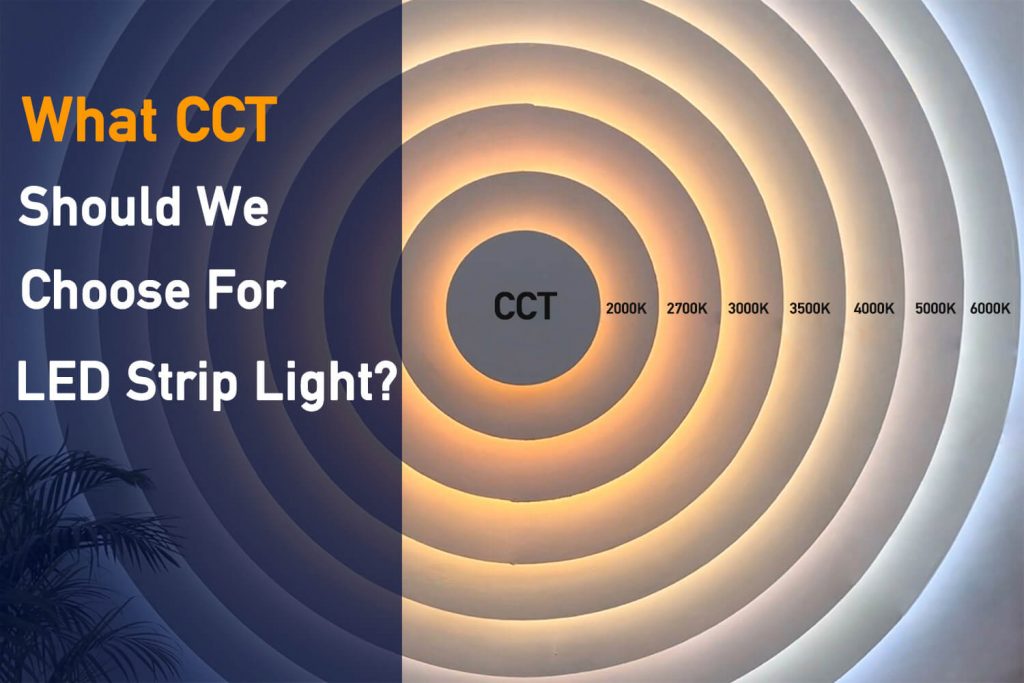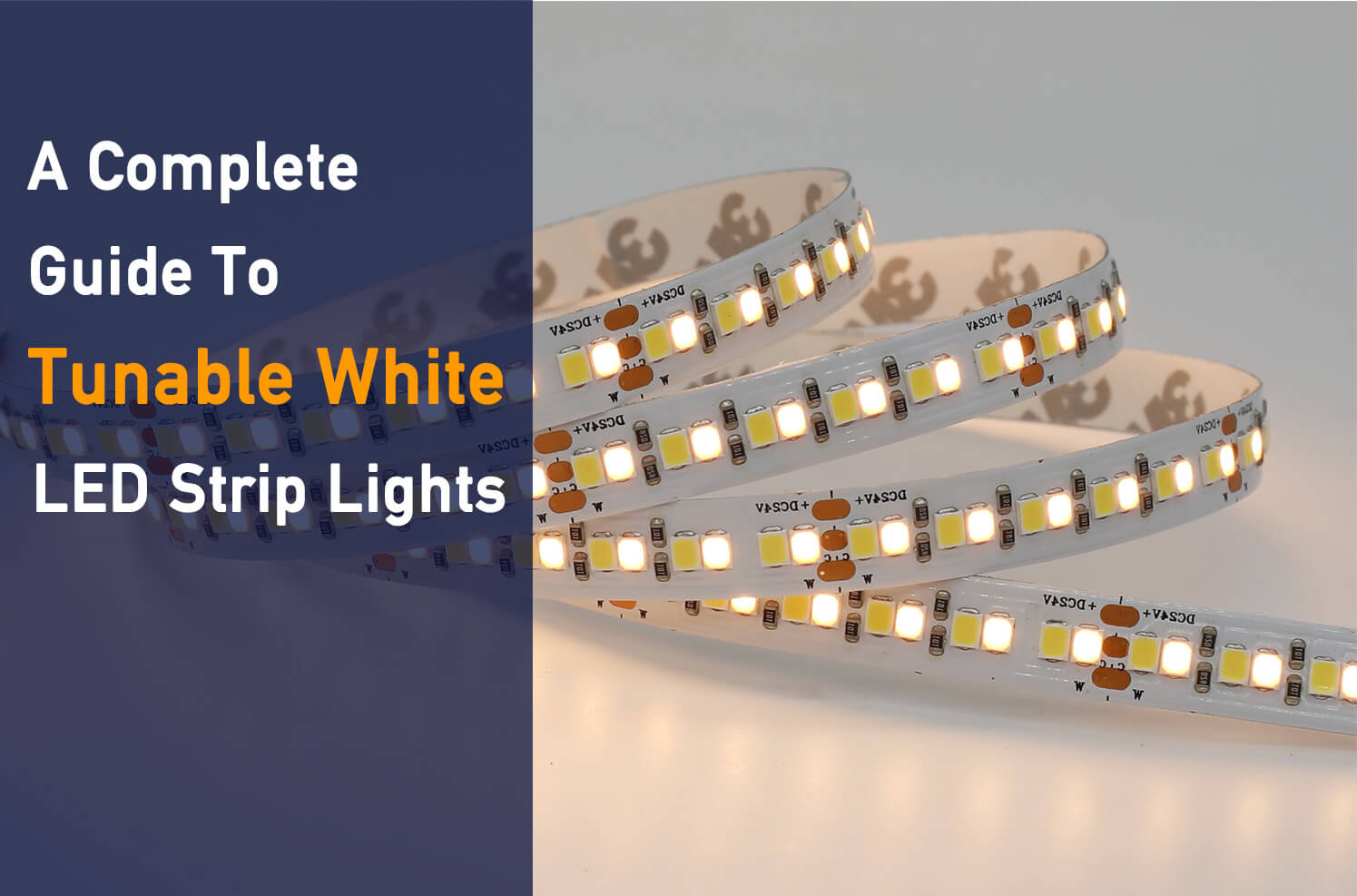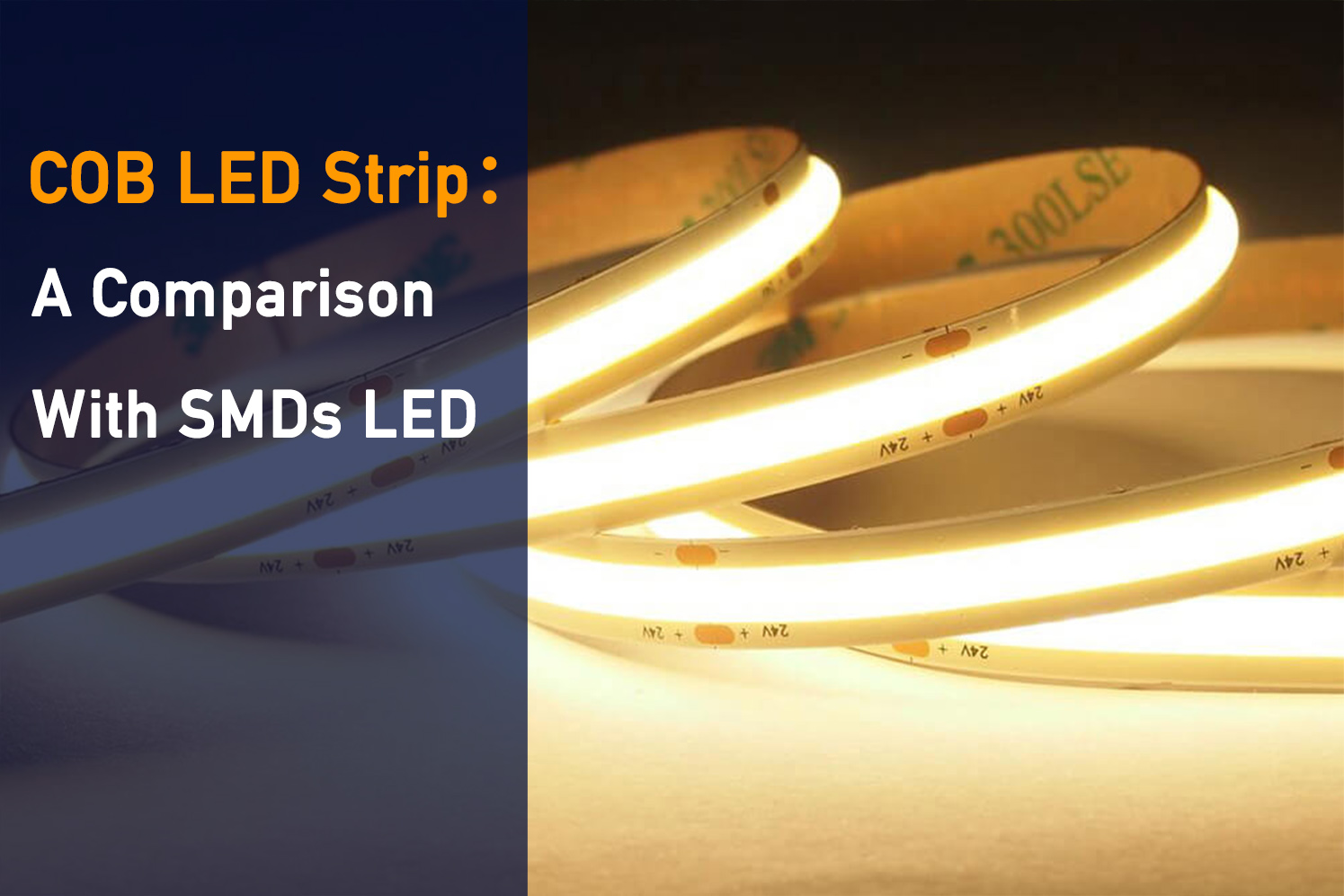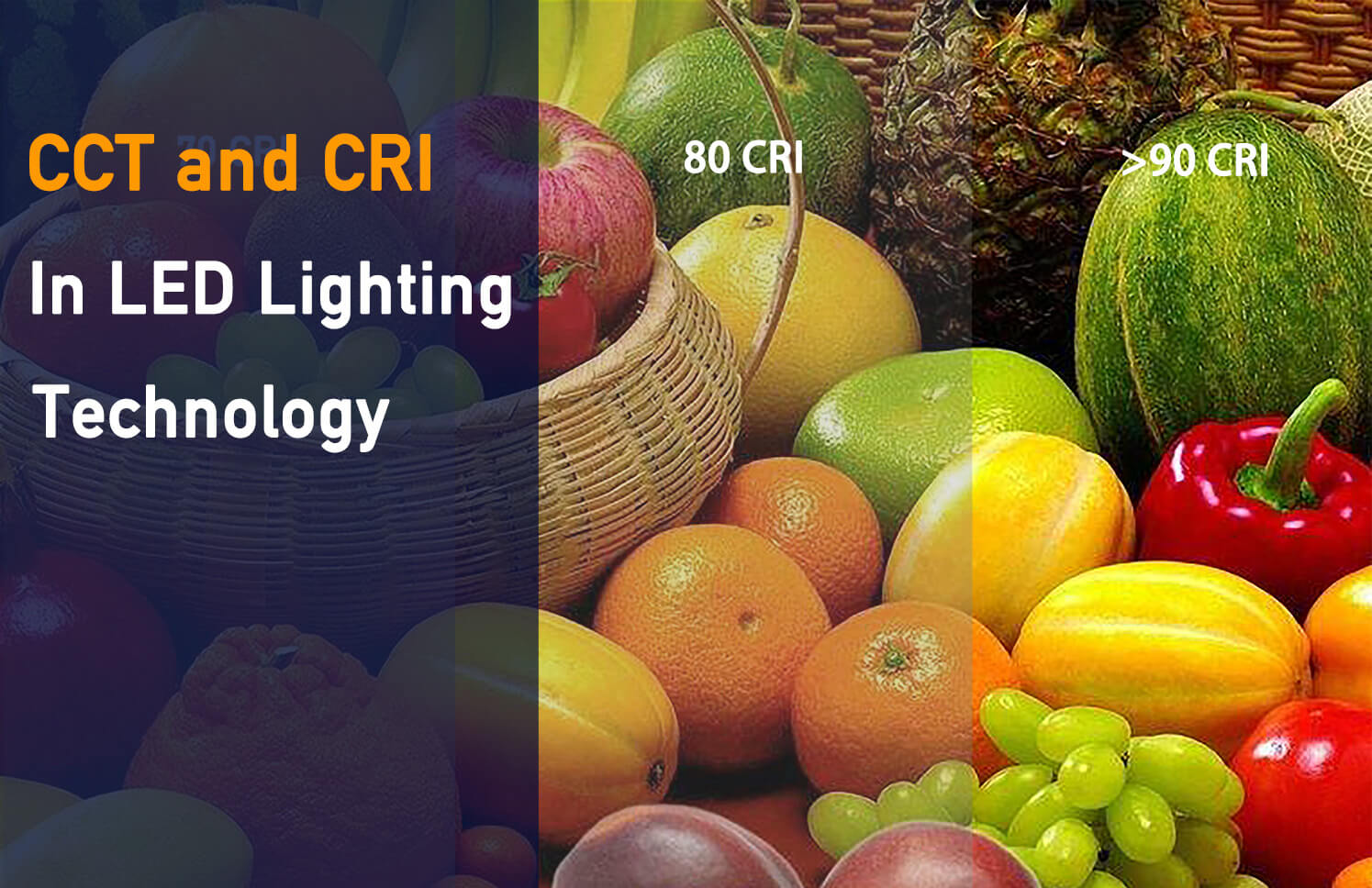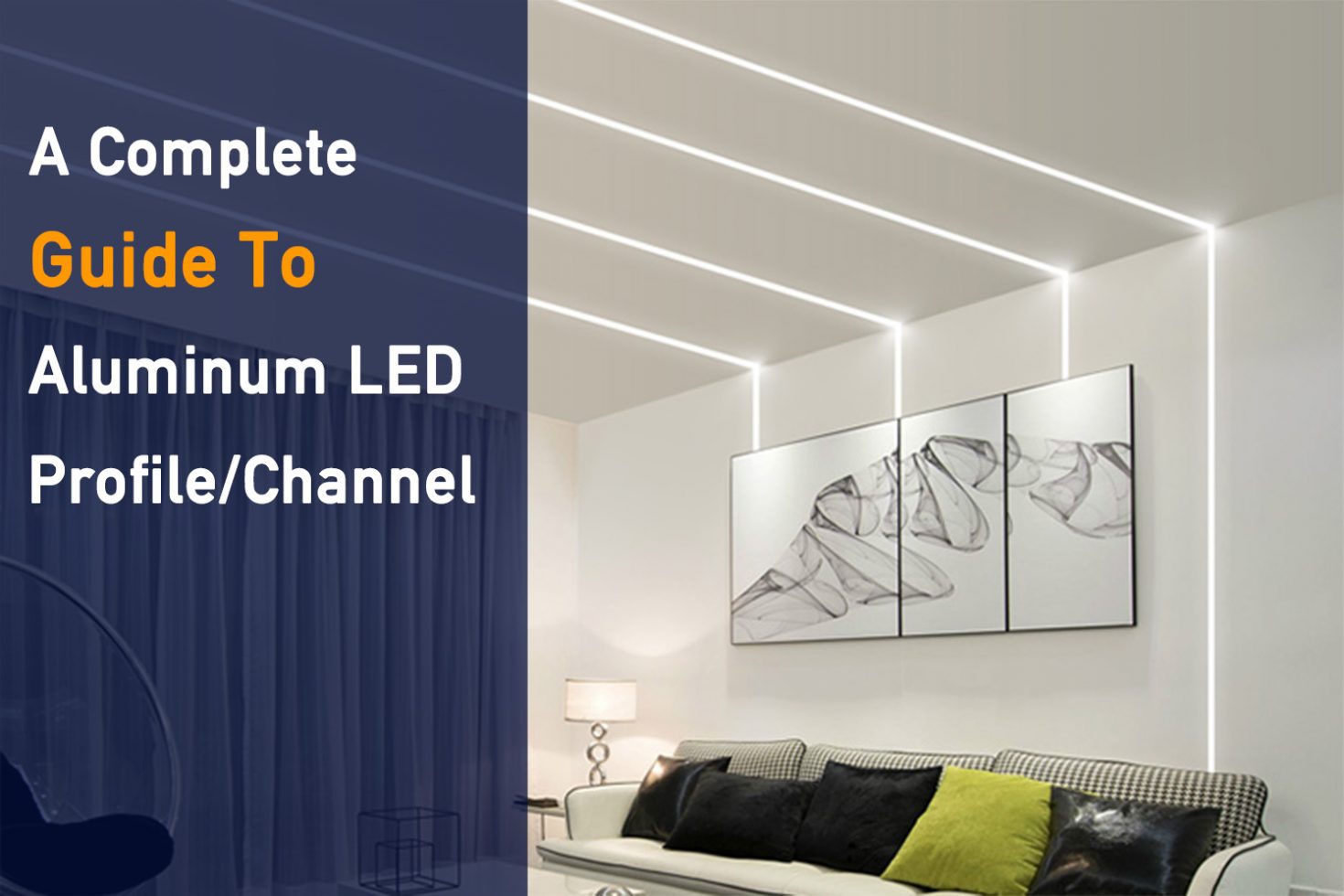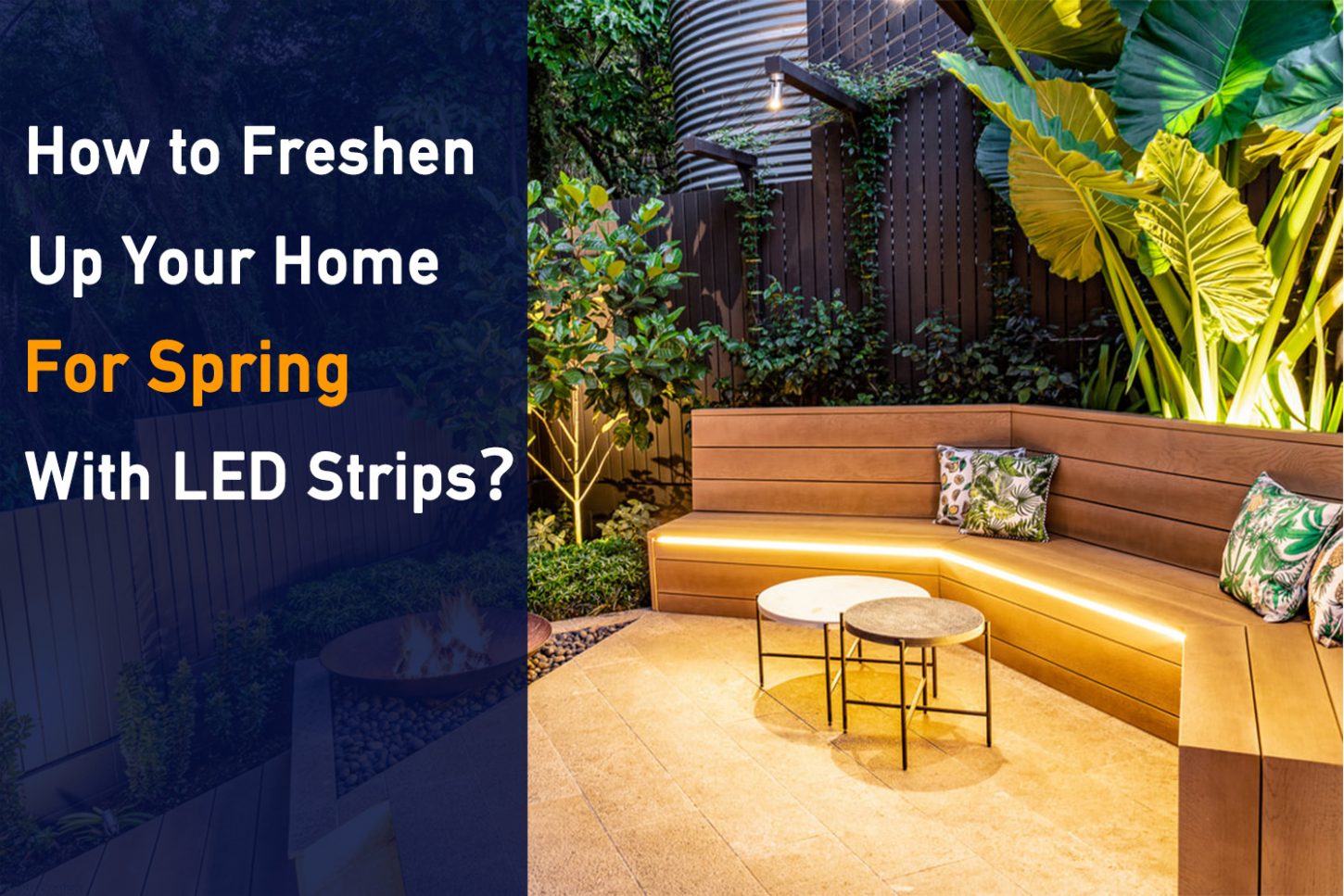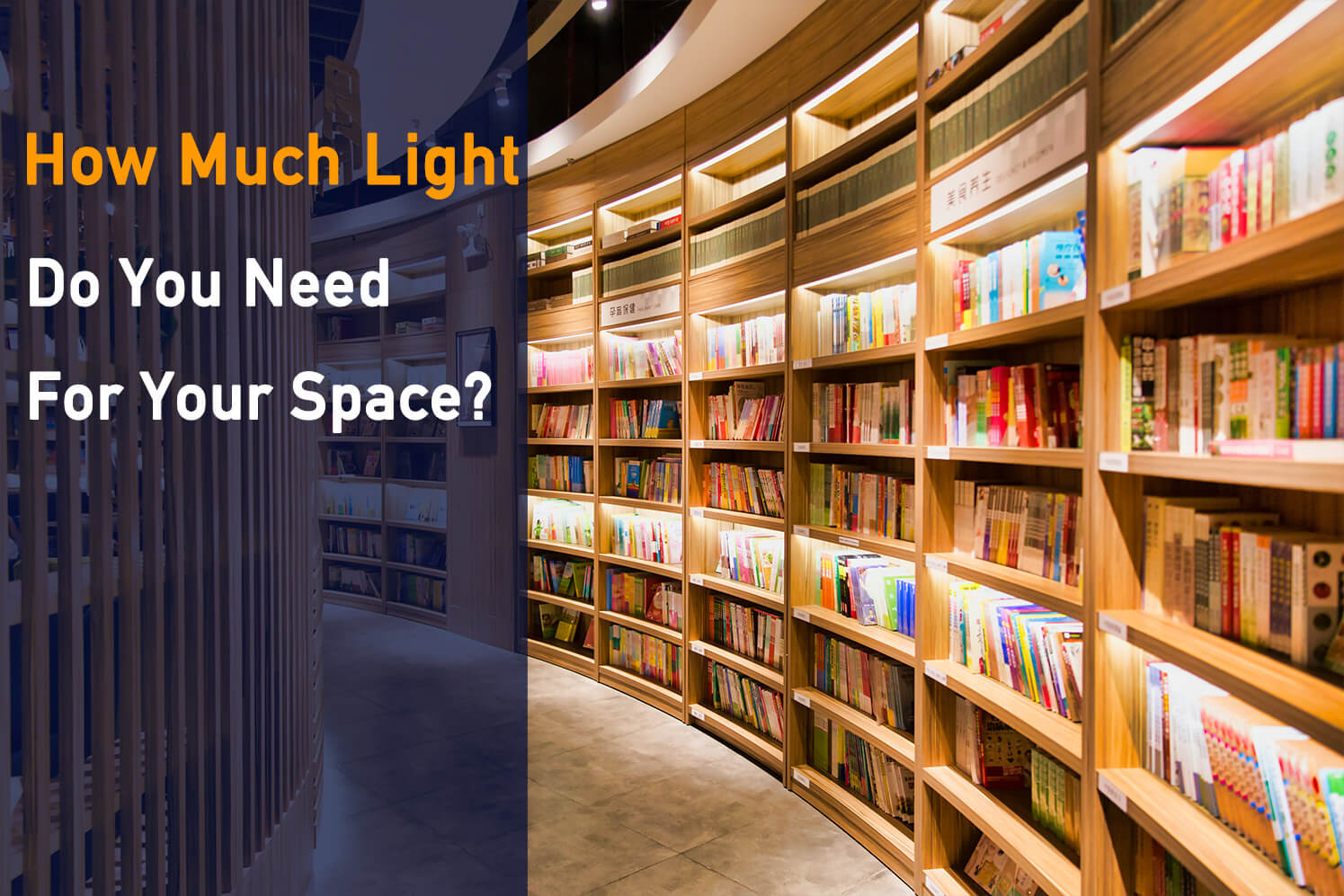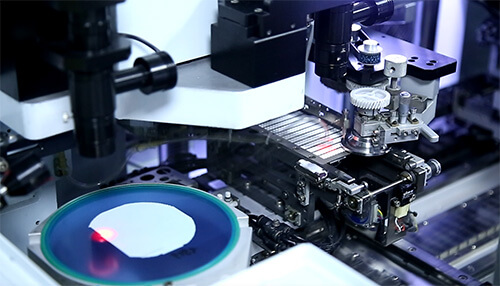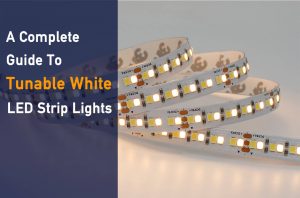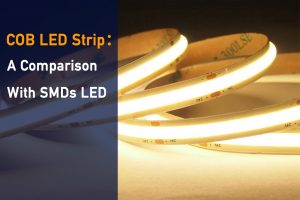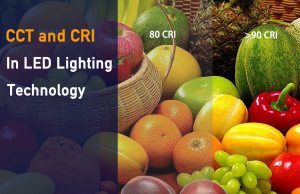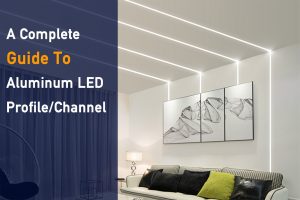The CCT, or correlated color temperature, that you should choose for your strip lights depends on its function. Your preference of ambiance, mood, and aesthetic play a role when selecting your lighting’s CCT. Strip light CCTs range between 1800K (warm white) and 6500K (cool white), and you can choose any number in between.
Choosing the right CCT for your LED strips can make or break your lighting project. If you’re still unsure about what to pick from countless options, this article is for you.
Article Guide
1. What is CCT?
CCT means Correlated Color Temperature. It numerically indicates the tones of the white light that every LED light produces. This is standardly measured in K (Kelvin).
The (CCT) tells you exactly the color of a light source. This measurement lets you know if a particular light bulb’s color will suit a room or environment.

CCT ranges between yellow and blue hues, typically between 1800K and 6500K. Warm light sources (1800K – 3000K) will have a yellow/orange color. Cool light sources (>4000K) will emit light that ranges on the blue hue.
- Cool White or Warm White
The ideal shade of white light, whether warm or cool, depends on the space where you would apply it. Getting this right will create your perfect lighting experience.

Warm white lighting produces around 1800-3000 in Kelvin degrees. They work best for spaces that need low ambient lighting, perfect for relaxation, such as restaurants, bedrooms, or other cozy areas.
Cool white light is often used for practical applications. You will see them in study areas, office spaces, department stores, and garages. They also have a more modern feel than warm white.
2. Factors to Consider When Choosing CCT
CCT can influence a room’s emotional atmosphere, so picking the right one is essential. Here are some factors to consider when choosing CCT.
2.1 Brightness
The brightness of an environment can have a psychological impact on its inhabitants. It can affect mood, giving it a boost or causing a downer.
- Difference Between CCT & Lumens
Lumen is the unit of measurement used to represent the amount of brightness in a specific area. It tells you how bright the light source is, regardless of its color.
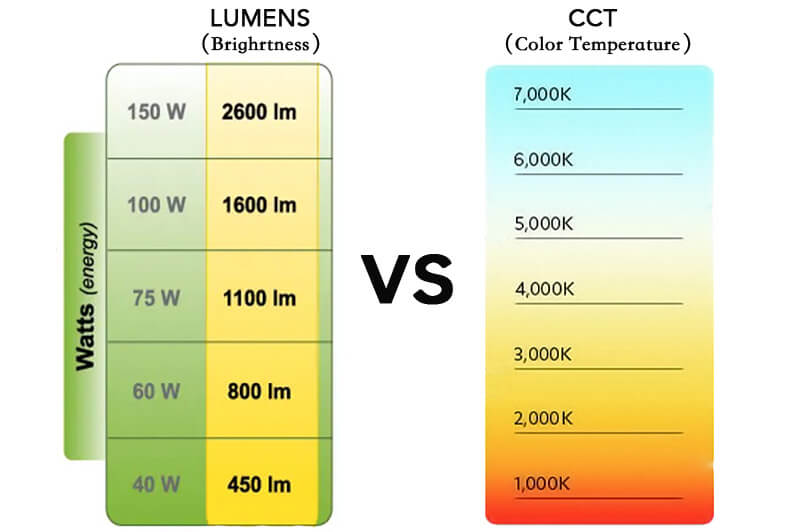
As you already know, CCT measures hue and color. It doesn’t take into account the light source’s level of brightness. An LED light may have a high 6500K in CCT but can still be dimmer than your cupboard’s lighting.
- The Relationship – Does CCT Affect Brightness?
Brightness and color temperature has a direct relationship. As a rule of thumb, the higher a light source’s CCT gets, the more lumens it can produce. This rule applies to LED light strips that have the same wattage (power).
So when you choose a low CCT light strip, you also have to confirm whether its lumen is sufficient.
And Myledy innovative Dim-to-Warm LED strip light can adjust the CCT from 3000K to 1800K by dimming the brightness.
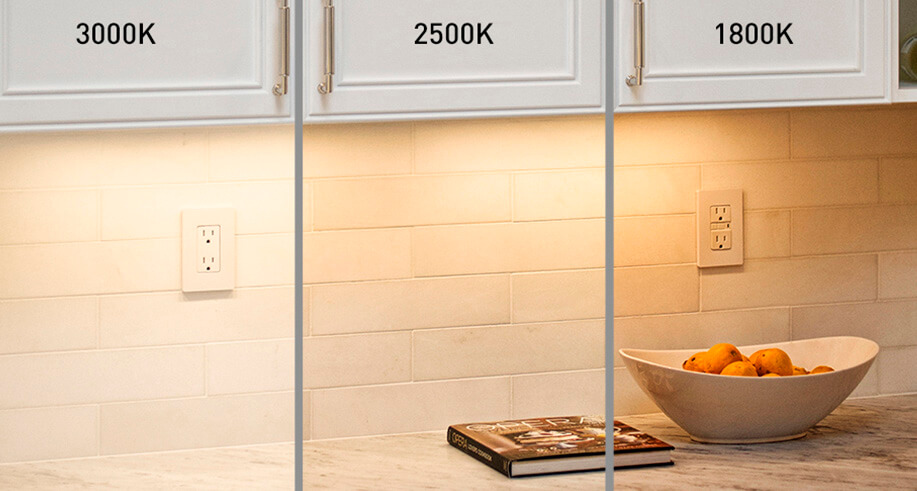
2.2 The Effects of CCT on Emotional Atmosphere
Light color can have a massive impact on mood. A room that has appropriate lighting can produce positive effects on the mind and body. It can make you feel calm, laid-back, or even more productive.
On the other hand, a room with the wrong lighting setup can have detrimental effects. Studies show that poor lighting can be a health hazard. It can cause eye strains, discomfort, and headaches. It can even contribute to mental health risks such as depression.
There are countless ways that you can customize a room’s lighting. You can even opt for strip lights with tunable CCTs, allowing you to regulate lighting to suit your mood.
2.3 Tunable CCT?
CCT doesn’t always need to be adjustable. But, there are dual-white LED strip lights that might help you if you can’t decide what lighting you’ll use in a space. These types of LED strip lights let you switch between warm and cold white with a controller.
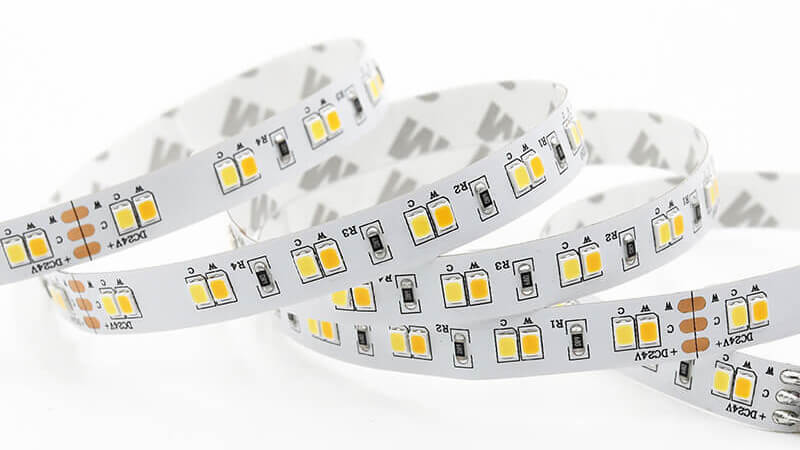
2.4 Does the strip Need Heat Dissipation?
Like all devices that run on electricity, LED lighting will produce heat as well. When the heat rises to certain levels, it can negatively affect the strip’s luminosity and CCT, even lowering its service life.
However, LED profiles can dissipate the heat efficiently. When using a led strip over 12w per meter, you can use the LED profile as a heat sink.
3. How to Select the Right CCT in Different Applications?
It’s time to walk you through CCT’s most common applications. There are ideal color temperatures for every environment. These CCTs should always complement the space’s particular function.
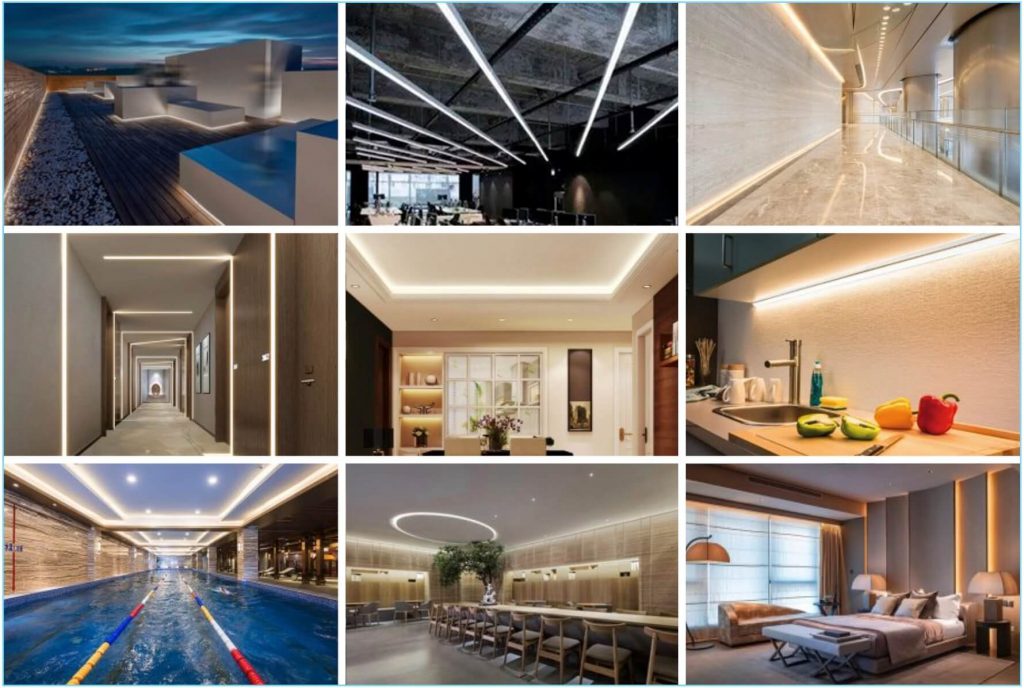
> Kitchen and Living Room
LED strip lights with higher CCTs work very well in kitchens and living rooms. The CCT is usually around 4000 to 6000 Kelvin. Dual-light LED strips are also recommended so you can switch from different ambiances.
> Bedroom
Bedrooms allow you to relax, and rest after a productive day. For an atmosphere conducive to relaxation and intimacy, it’s best to have a CCT of around 2400K-2700K.
> Shopping Malls
Shopping malls are generally busy commercial spaces. Most proprietors would prefer lighting that has high lumen outputs. Cooler CCTs 5000K-6000K are perfect for shopping malls as they give an energizing ambiance.
> Medical Facilities
Healthcare facilities need bright ambient lighting. Clear lights allow medical personnel to function correctly and cater to patients. For hospitals and clinics, the CCT range should be 3500K to 5000K. This range produces the lighting necessary for efficiency and alertness.
> Workplaces and Office Spaces
Commercial office spaces could use lighting that has a CCT range of 4000K to 6000K. This range is conducive to productivity as it lets office staff perform with clarity.
> Cabinet/Exhibition Centers
Proper lighting for exhibition displays varies depending on what is being showcased. You would want a color that complements the item or product you have on display.
> Outdoor Sites (Parking, Garages, Etc.)
Cool lighting (5000K – 6500K) is the go-to for outdoor areas such as parking spaces and garages. It can provide enough illumination to mimic natural lighting.
> General Retail
When it comes to general retail, lighting color should be based on what’s on display. Brands, products, and store atmosphere can vary widely. Some brands even use a mix of different color temperatures to bring out their uniqueness. Most retailers would choose between 2700K and 4000K.
> Jewelry Display
Like most exhibition cabinets, LEDs strips for jewelry do well in white (5000K-6000K). This range allows displays like diamonds and silver to appear attractive to customers.
> High-End Restaurants
High-end restaurants work well with warm lighting. Soft, faint lights produce a sophisticated and comfortable ambiance. Interior designers would often go for color temperature in the range of 1800K-2700K.
4. Why do lights with the Same CCT Look Different?
You may notice the color differences between led lighting, even if they are both same as 3000K CCT.
4.1 Color Consistency Issue
Actually color inconsistency is a common issue among LED lighting. Variations between different manufacturers or batches can cause this issue.
For instance, the Nominal 3000K CCT has a variance of plus or minus 100K, the actual color temperature could be 2900K or 3100K. But we still name it 3000K CCT.

4.2 How to Solve Color Consistency Issues?
You can avoid LED consistency issues by using these long-term solutions:
- Purchase from a reliable supplier who can provide led lighting with excellent color consistency.
- Get tunable lighting. they will let you mitigate color variations.
- Always choose high-quality LED products. This solution is a no-brainer as substandard options often come with a lot of drawbacks.
5. How to Choose the Best Quality LED Strip Light?
There are endless choices of brands when it comes to LED strip lights. Apart from your local brick-and-mortar store, you can find thousands of products on Amazon and Alibaba.
High quality LED strips must be produced by professional manufacturer which with advanced and standardized production process. This part of the article walks you through the factors to look for when opting for quality LED strip lights.
5.1 High-Quality Components
Superior components play a role in the quality and performance of LED products.
- SMD
Surface-mounted devices (SMDs) are the LED chips mounted on light strips. They can be considered as the “heart” of LED.

You might’ve come across numbers such as “2835” or “5050” when browsing for LED strip lights. These numbers simply refer to the physical size of the LED chips themselves.
High-quality chips produce stable and efficient performance. Brands like Epistar, Bridgelux, and Nichia provide some of the best chips out there.
- PCB(Printed Circuit Board)
For LED strips, it’s a good idea to have double-layer PCBs at 2.0 ounces. High-quality PCBs have superior power consumption efficiency and moisture resistance. They can also diffuse heat faster.
- Resistor
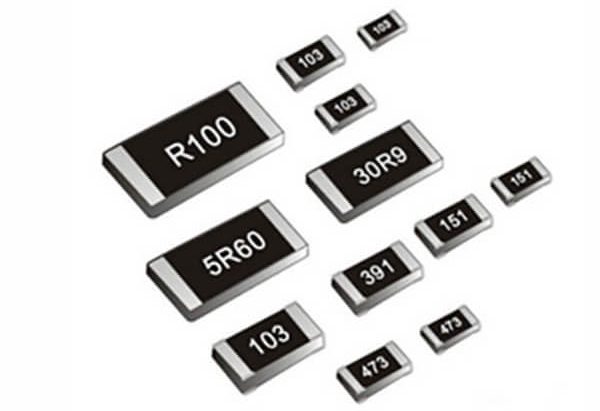
A resistor is a standard electrical component used to generate resistance to the flow of electric current. These components prevent excess currents from passing through LEDs, avoiding potential damage.
An ideal resistor can stabilize the variations of currents, effortlessly adapting to their lows and highs. This characteristic ensures that the LED is always protected and maintains a long service life.
- Waterproofing Material
Waterproofing can prevent water from penetrating your strip lights and thus causing damage.
High-quality LED strip lights always use silicone glue as the waterproofing material. They can withstand high temperatures and protect your strip against corrosion.
Inferior LED products use other waterproofing materials like PU glue and epoxy resin. These materials are prone to faster deterioration and discoloration after prolonged usage.
5.2 Choosing a Reliable Supplier
Lighting projects can be challenging. But having the right supplier at your side can be your key to success. A reliable supplier can help you design a custom-tailored solution. They can also point you to the right products for your particular goals.
Here are the factors to consider when choosing a reliable, results-driven supplier.
> Strict Quality Control
Reliable vendors and suppliers always employ a robust quality control system. Multiple testing makes up their processes to ensure each product’s exceptional performance.
Strict quality control programs conduct various tests such as:
- Color Comparison Testing
- Lighting Source Testing
- Environmental Testing
- Waterproofing Testing
- Life Testing
These tests ensure that only the best results come out of manufacturing.
> Certification
Suppliers with proper certifications or show reliability and authority. These documents show that they’ve taken the proper steps in bringing high-quality products to customers. Certificates can also act as a pass card to sell on big markets.
You also want to conduct your due diligence when sourcing for suppliers. Certified brands such as Myledy have also garnered awards such as the National High-Tech Enterprise title.

Dependable suppliers also develop products that surpass the standards of third-party institutions, such as UL, TUV, CE etc.
> Professional and Perfect After-Sales Service
After-sales support is an essential part of customer service. Great suppliers will not hesitate to go above and beyond after-sales, apart from providing top-grade LED products. They will usually employ flexible and fair return policies to ensure satisfied customers.
> Famous Brands
With its energy-efficient qualities, LED continues to outsell traditional types of lighting. As its market continues to grow, many big players have established their share of the piece of the pie. Brands such as GE Lighting, Philips/Signify, Acuity, and Cree are some of the most famous LED brands.
With the rise of smart devices and homes, demand for more LED lighting systems will only continue to grow.
Final Words
Choosing the right brand or product is no easy task, but it’s always good to keep your decisions informed. CCTs are also tricky little details. They can make or break the result you want to get out of your lighting project.
Partnering with experts is as crucial as choosing your appropriate color temperature. Having all these factors well in place ensures that you’ll be able to build your space’s desired atmosphere.

